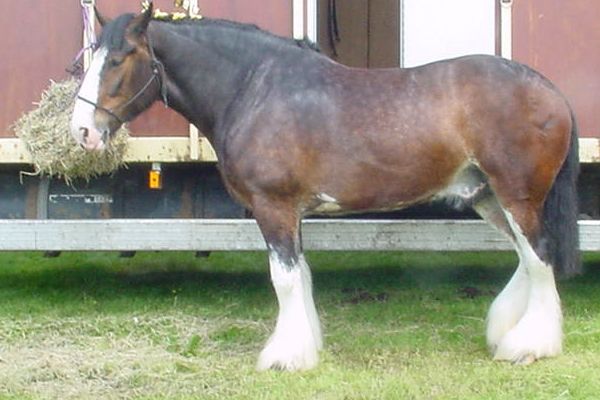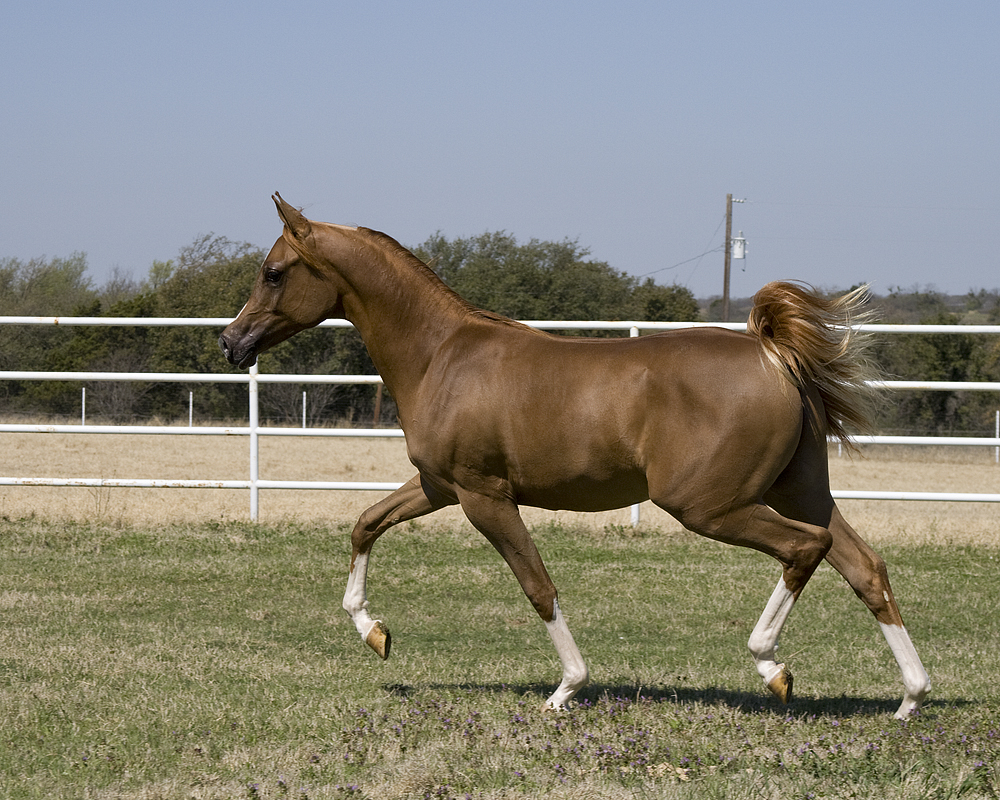|
Waler
The Waler is an Australian breed of horse that was developed from horses that were brought to the Australian colonies in the 19th century. The name comes from their breeding origins in New South Wales; they were originally known as "New South Walers". Origins and characteristics The Waler combined a variety of breeds; particularly the Thoroughbred, Arab, the Cape horse (from the Cape of Good Hope), Timor Pony and perhaps a little Clydesdale or Percheron. It was originally considered only a "type" of horse and not a distinct breed. However, as a landrace bred under the extreme climate and challenging working conditions of Australia, the Waler developed into a hardy horse with great endurance even when under extreme stress from lack of food and water. It was used as a stockman's horse and prized as a military remount. Walers were also used by bushrangers, troopers and exploration expeditions that traversed inland Australia.Mather, Jill, ''Forgotten Heroes – The Australian ... [...More Info...] [...Related Items...] OR: [Wikipedia] [Google] [Baidu] |
Cavalry
Historically, cavalry (from the French word ''cavalerie'', itself derived from ''cheval'' meaning "horse") are groups of soldiers or warriors who Horses in warfare, fight mounted on horseback. Until the 20th century, cavalry were the most mobile of the combat arms, operating as light cavalry in the roles of reconnaissance, Screening (tactical), screening, and skirmisher, skirmishing, or as heavy cavalry for decisive economy of force and shock attacks. An individual soldier in the cavalry is known by a number of designations depending on era and tactics, such as a cavalryman, Equestrianism, horseman, trooper (rank), trooper, cataphract, knight, Drabant Corps of Charles XII, drabant, hussar, uhlan, mamluk, cuirassier, lancer, dragoon, samurai or horse archer. The designation of ''cavalry'' was not usually given to any Military animal, military forces that used other animals or platforms for mounts, such as chariots, Camel cavalry, camels or War elephant, elephants. Infantry who m ... [...More Info...] [...Related Items...] OR: [Wikipedia] [Google] [Baidu] |
Hand (length)
The hand is a non- SI unit of measurement of length standardized to . It is used to measure the height of horses in many English-speaking countries, including Australia, Canada, Ireland, the United Kingdom, and the United States. It was originally based on the breadth of a human hand. The adoption of the international inch in 1959 allowed for a standardized imperial form and a metric conversion. It may be abbreviated to "h" or "hh". Although measurements between whole hands are usually expressed in what appears to be decimal format, the subdivision of the hand is not decimal but is in base 4, so subdivisions after the radix point are in quarters of a hand, which are inches. Thus, 62 inches is fifteen and a half hands, or 15.2 hh (normally said as "fifteen-two", or occasionally in full as "fifteen hands two inches"). Terminology "Hands" may be abbreviated to "h", or "hh". The "hh" form is sometimes interpreted as standing for "hands high". When spoken aloud, hands are ... [...More Info...] [...Related Items...] OR: [Wikipedia] [Google] [Baidu] |
Cairo
Cairo ( ; , ) is the Capital city, capital and largest city of Egypt and the Cairo Governorate, being home to more than 10 million people. It is also part of the List of urban agglomerations in Africa, largest urban agglomeration in Africa, List of largest cities in the Arab world, the Arab world, and List of largest metropolitan areas of the Middle East, the Middle East. The Greater Cairo metropolitan area is List of largest cities, one of the largest in the world by population with over 22.1 million people. The area that would become Cairo was part of ancient Egypt, as the Giza pyramid complex and the ancient cities of Memphis, Egypt, Memphis and Heliopolis (ancient Egypt), Heliopolis are near-by. Located near the Nile Delta, the predecessor settlement was Fustat following the Muslim conquest of Egypt in 641 next to an existing ancient Roman empire, Roman fortress, Babylon Fortress, Babylon. Subsequently, Cairo was founded by the Fatimid Caliphate, Fatimid dynasty in 969. It ... [...More Info...] [...Related Items...] OR: [Wikipedia] [Google] [Baidu] |
Australian Stud Book
The ''Australian Stud Book'' (ASB), is the body responsible for ensuring the integrity of Thoroughbred breeding in Australia. Australia is the second-largest Thoroughbred breeding country in the world behind the US. The principal functions of the ASB include identification procedures along with DNA testing of mares and foals and the recording of a mare’s progeny and stallion statistics. In 2003 the ASB introduced microchips for foals, which is the most secure means of horse identification when and combined with freeze branding, provides racing officials with the most dependable identification system in the world. The ASB regularly produces printed Stud Books. These books are now over 3,000 pages, with volume 42 of the ASB containing the breeding records of 43,000 mares and 70,000 of their named offspring. The ASB also controls the comprehensive online database which contains the records of over 860,000 horses. This database includes every Australian foal born since 1972 and i ... [...More Info...] [...Related Items...] OR: [Wikipedia] [Google] [Baidu] |
Packhorse
A packhorse, pack horse, or sumpter refers to a horse, mule, donkey, or pony used to carry goods on its back, usually in sidebags or panniers. Typically packhorses are used to cross difficult terrain, where the absence of roads prevents the use of wheeled vehicles. Use of packhorses dates from the Neolithic period to the present day. Today, westernized nations primarily use packhorses for recreational pursuits, but they are still an important part of everyday transportation of goods throughout much of the developing world and have some military uses in rugged regions. History Packhorses have been used since the earliest period of domestication of the horse. They were invaluable throughout antiquity, through the Horses in the Middle Ages, Middle Ages, and into modern times where roads are nonexistent or poorly maintained. Historic use in England Packhorses were heavily used to transport goods and minerals in England from medieval times until the construction of the first toll ro ... [...More Info...] [...Related Items...] OR: [Wikipedia] [Google] [Baidu] |
Draft Horse
A draft horse (US) or draught horse (UK), also known as dray horse, carthorse, work horse or heavy horse, is a large horse bred to be a working animal hauling freight and doing heavy agricultural tasks such as plowing. There are a number of breeds, with varying characteristics, but all share common traits of strength, patience, and a docile temperament. While indispensable to generations of pre-industrial farmers, draft horses are used today for a multitude of purposes, including farming, draft horse showing, logging, recreation, and other uses. Draft breeds have been crossbred with light riding breeds such as the Thoroughbred to create sport horses or warmbloods. While most draft horses are used for driving, they can be ridden and some of the lighter draft breeds are capable performers under saddle. Characteristics Draft horses are recognizable by their extremely muscular build. They tend to have broad, short backs with powerful hindquarters. In general, they are t ... [...More Info...] [...Related Items...] OR: [Wikipedia] [Google] [Baidu] |
Trot (horse Gait)
The trot is a two-beat diagonal horse gait where the diagonal pairs of legs move forward at the same time with a moment of suspension between each beat. It has a wide variation in possible speeds, but averages about . A very slow trot is sometimes referred to as a jog. An extremely fast trot has no special name, but in harness racing, the trot of a Standardbred is faster than the gallop of the average non-horse racing, racehorse, and has been clocked at over . On June 29, 2014, at Pocono Downs in Pennsylvania the Swedish standardbred Sebastian K trotted a mile in 1 minute, 49 seconds (quarters were passed at 26:2, 55:3 and 1,21:4). This is equivalent to a 1000-pace in 1.07,7 or 53.14 kilometers per hour or 33 miles per hour. From the standpoint of the balance of the horse, the trot is a very stable gait and does not require the horse to make major balancing motions with its head and neck.Harris, Susan E. ''Horse Gaits, Balance and Movement'' New York: Howell Book House 1993 ... [...More Info...] [...Related Items...] OR: [Wikipedia] [Google] [Baidu] |
Canter
The canter and gallop are variations on the fastest gait that can be performed by a horse or other equine. The canter is a controlled three-beat gait, while the gallop is a faster, four-beat variation of the same gait. It is a natural gait possessed by all horses, faster than most horses' trot, or ambling gaits. The gallop is the fastest gait of the horse, averaging about . The speed of the canter varies between depending on the length of the horse's stride. A variation of the canter, seen in western riding, is called a lope, and is generally quite slow, no more than . Etymology Since the earliest dictionaries there has been a commonly agreed suggestion that the origin of the word "canter" comes from the English city of Canterbury, a place of pilgrimage in the Middle Ages, as referred to in ''The Canterbury Tales'', where the comfortable speed for a pilgrim travelling some distance on horseback was above that of a trot but below that of a gallop. However, a lack of compell ... [...More Info...] [...Related Items...] OR: [Wikipedia] [Google] [Baidu] |
Horse Gait
Horses can use various gaits (patterns of leg movement) during Terrestrial locomotion, locomotion across solid ground, either naturally or as a result of specialized horse training, training by humans.Ensminger, M. E. ''Horses and Horsemanship'' 6th edition USA: Interstate Publishers 1990 pp. 65–66 Classification Gait, Gaits are typically categorized into two groups: the "natural" gaits that most horses will use without special training, and the "Ambling gait, ambling" gaits that are various smooth-riding, four-beat footfall patterns that may appear naturally in some individuals. Special training is often required before a horse will perform an ambling gait in response to a equestrianism, rider's command. Another system of classification that applies to Quadrupedalism, quadrupeds uses three categories: walking and ambling gaits, running or trotting gaits, and leaping gaits.Tristan David Martin Roberts (1995) ''Understanding Balance: The Mechanics of Posture and Locomotion'', ... [...More Info...] [...Related Items...] OR: [Wikipedia] [Google] [Baidu] |



